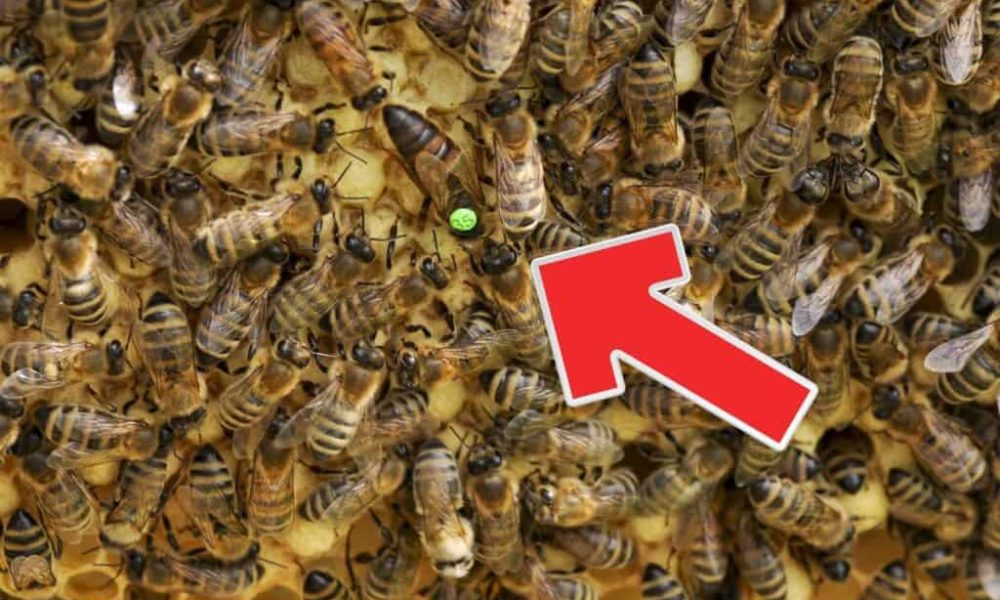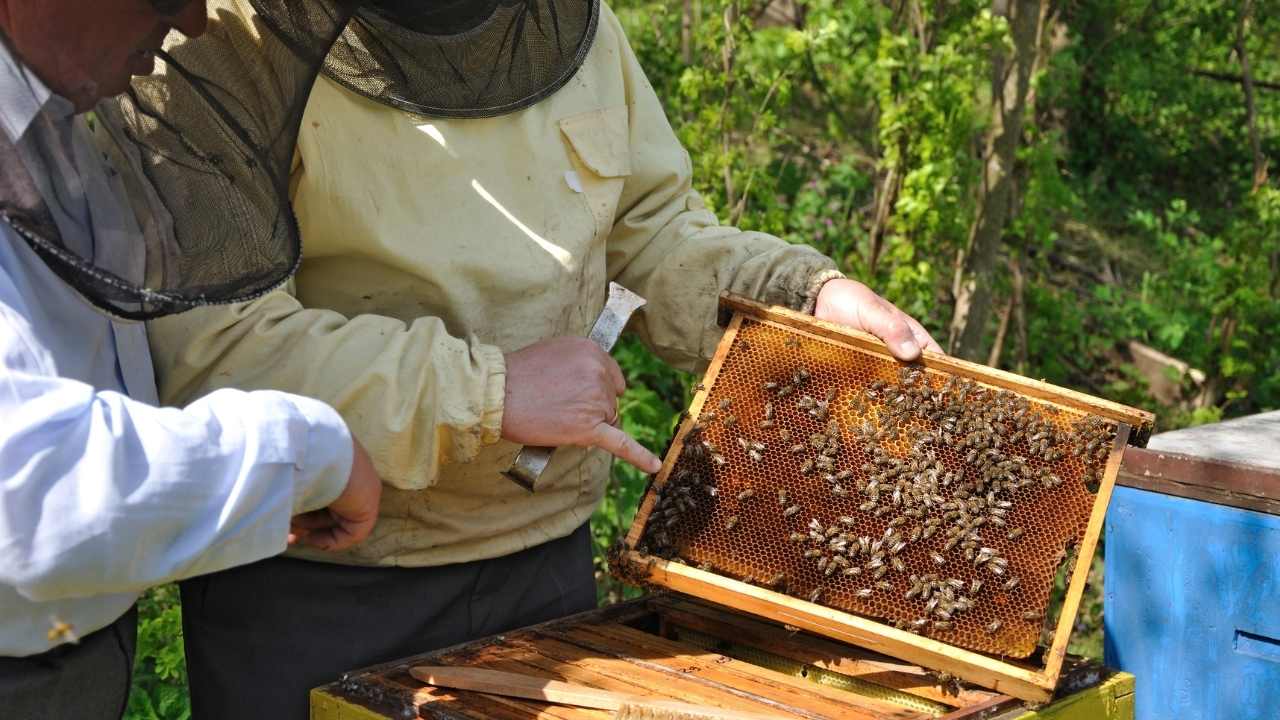
Are you looking for a new and fulfilling hobby that not only benefits the environment but also provides you with delicious, all-natural honey? Beekeeping might just be the perfect activity for you. Not only does it allow you to connect with nature and learn about the fascinating world of bees, but it also has numerous health benefits such as reducing stress and increasing your exposure to beneficial bacteria.
However, starting your own bee colony can seem overwhelming at first. With so many types of hives and equipment available, it’s important to do your research before diving in. In this article, we’ll guide you through everything you need to know about picking the perfect hive and starting your own bee colony. From choosing the right location to maintaining your bees, we’ve got you covered on all aspects of beekeeping. So let’s get started on creating your very own honeycomb home!
The Benefits of Beekeeping
Beekeeping offers a plethora of advantages that are worth exploring. Apart from the obvious benefits of having a steady supply of honey and beeswax, beekeeping can also have positive effects on your health. Honey is known for its antibacterial properties, making it an excellent natural remedy for sore throats and colds. Additionally, consuming local honey can help alleviate allergies as it contains small amounts of pollen from local plants.
Aside from personal health benefits, keeping bees can also have a positive environmental impact. Bees play a crucial role in pollinating crops and plants, ensuring their continued growth and reproduction. Without these vital pollinators, our food sources would be greatly diminished. By becoming a beekeeper, you are contributing to the preservation of not only honeybees but also the environment as a whole.
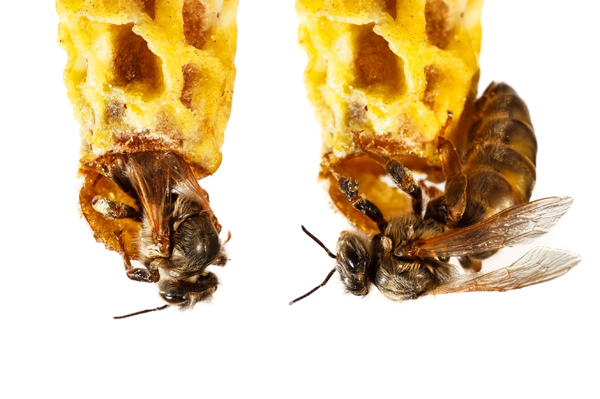
When choosing the right location for your hive, there are several factors to consider.
Choosing the Right Location
As luck would have it, finding the perfect location for your bee colony may not be as difficult as you think. In fact, the ideal spot might just be in your own backyard! When selecting a site for your hive, there are a few important things to keep in mind. Firstly, consider the availability of bee-friendly plants nearby. Bees need access to nectar and pollen sources in order to thrive, so planting flowers and shrubs that bloom throughout the year is crucial.
Another key factor to consider when choosing a location is hive placement. Ideally, your hive should be situated on level ground with good drainage and plenty of sunlight throughout the day. Avoid placing hives in low-lying areas or near standing water, as this can lead to dampness and disease among your bees. With these considerations in mind, you’ll be well on your way to creating a thriving home for your new bee friends!
When it comes to selecting the right type of hive for your colony, there are several options available depending on your needs and preferences.
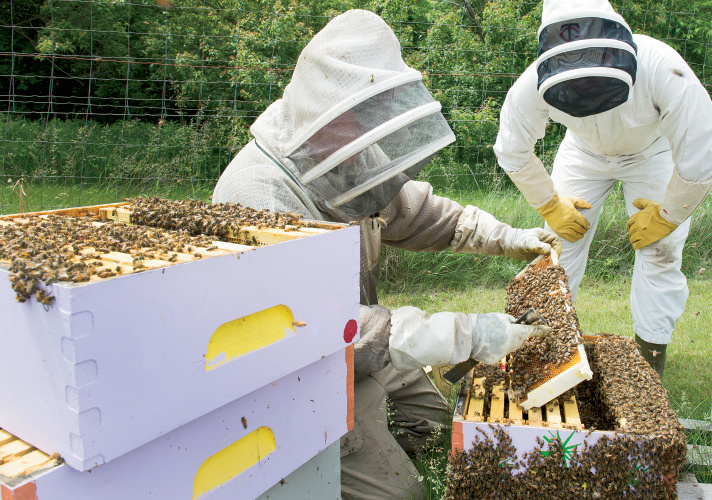
Types of Hives
Now let’s explore the different types of hives you can use to create a cozy abode for your buzzing buddies. There are two popular types of hives: Langstroth and Top Bar. Langstroth hives have removable frames that allow easy inspection and manipulation of the colony. This type is commonly used in commercial beekeeping due to its ability to house large colonies. Meanwhile, Top Bar hives are horizontal with bars laid across the top where bees build their own comb without using pre-made frames. This type is preferred by naturalist beekeepers because it allows bees to build comb naturally.
When choosing between these two, consider their pros and cons. Langstroth hives may be more efficient for honey production, but they require heavy lifting during inspections since each frame must be removed individually. On the other hand, Top Bar hives provide less control over the colony and may produce less honey, but they offer an easier inspection process as only one bar needs to be lifted at a time. Ultimately, both types of hives have their advantages and disadvantages depending on your goals as a beekeeper.
As you decide on what type of hive would work best for you, keep in mind that selecting essential equipment is just as important as choosing the right hive.
Essential Equipment
Get ready to gear up with the must-haves for an unforgettable beekeeping experience! As a beekeeper, you’ll need essential equipment to safely handle your bees and maintain your hive. Hive tools are a vital part of your kit. You’ll use them to open hives, scrape off excess honeycomb, and remove frames from the hive. A standard hive tool is made of steel and has a flat end for prying open boxes and a curved end for scraping away wax buildup.

Protective gear is also crucial when working with bees. It includes gloves, a veil or hat, and a full-body suit. Gloves should be thin enough so that you can feel what you’re doing but thick enough to prevent stings. The veil or hat protects your face from bee stings while allowing you to see clearly. The full-body suit provides protection from head-to-foot against bee attacks. With these essential pieces of equipment in hand, you’ll be ready to start working on building your honeycomb home!
Now that you have all the necessary equipment at hand, it’s time to start thinking about starting your own colony of bees! But before we dive into that topic, let’s take some time to understand the importance of maintaining proper hygiene practices around your hives.
Starting Your Bee Colony
So, you’ve picked out the perfect hive and now it’s time to start your bee colony. The first step is purchasing bees – this can be done either through a local supplier or online. Once you have your bees, the next step is installing them in your hive. This involves carefully transferring them from their shipping container into the hive, making sure they are comfortable and secure. Finally, don’t forget to feed your bees – especially in the early stages when they are establishing their colony. Sugar water is a great option for providing them with the necessary nutrients to thrive.
Purchasing Bees
Buying bees is like adding new members to your family – each one has their own personality and unique contribution to the hive. When it comes to bee breed selection, you have several options to choose from, such as Italian, Carniolan, or Russian honeybees. Each type has its own characteristics, strengths and weaknesses that should be taken into account before making a purchase. For instance, Italian honeybees are known for their gentle temperament and high honey production rate; however, they may require more attention when it comes to disease prevention and parasite control.
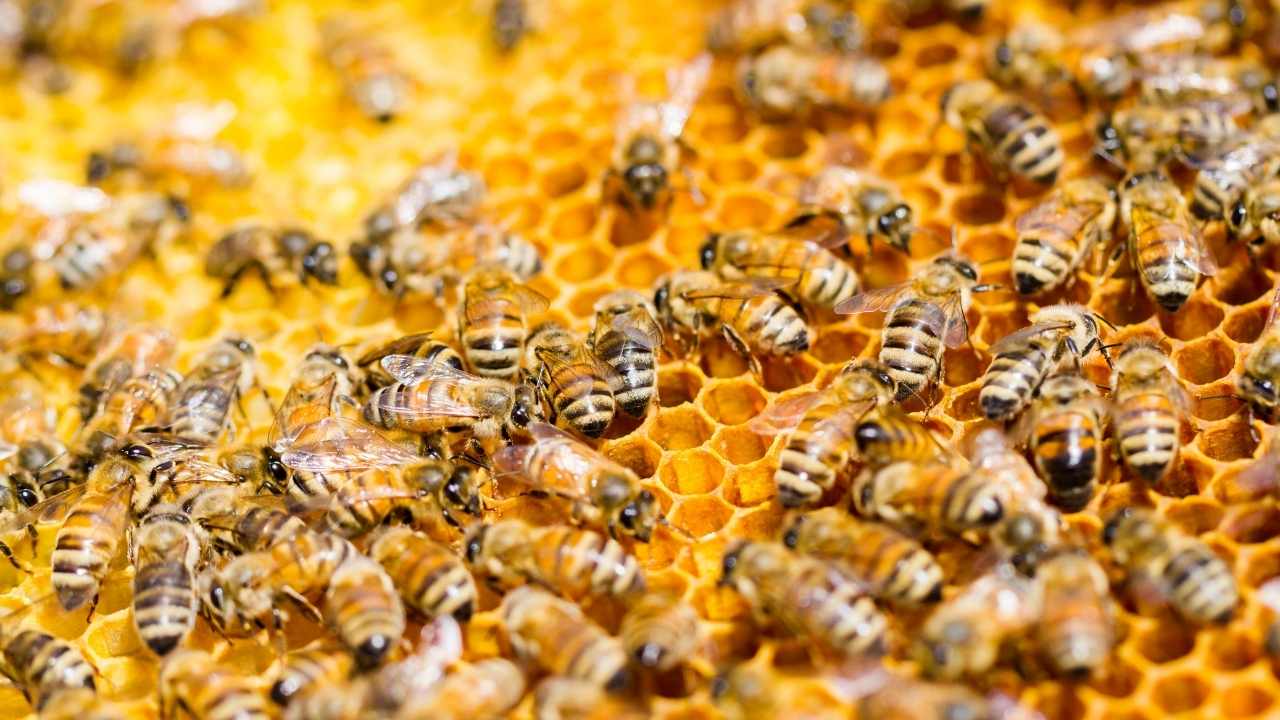
Another important factor when purchasing bees is hive maintenance costs. You’ll need to invest in certain items such as protective clothing, smoker equipment and hive tools. Additionally, you’ll have to consider ongoing expenses such as feeding supplements during low nectar flow periods or winter months. As with any pet or livestock investment, it’s crucial to plan ahead and budget accordingly for these expenses.
Now that you’ve selected your desired bee breed(s) and prepared your hive space (as discussed in the previous section), it’s time to get started on installing bees in your hive!
Installing Bees in Your Hive
Ready to add some buzzing new friends to your backyard? Here’s how you can easily install bees in their new happy home! First, it is important to understand bee behavior during installation. Bees may be disoriented and agitated during the process, so it is crucial to work calmly and efficiently.
When installing the bees, wear protective gear including a veil, gloves, and a suit. Gently remove the frames from the hive box and spray them with sugar water before carefully placing them into the new hive. Next, release the queen bee into the hive by removing her cage and allowing her to crawl out on her own. Queen bee management is key for a successful colony as she regulates egg-laying and overall productivity of the hive. Finally, close up the hive carefully but securely and allow your new colony time to adjust.
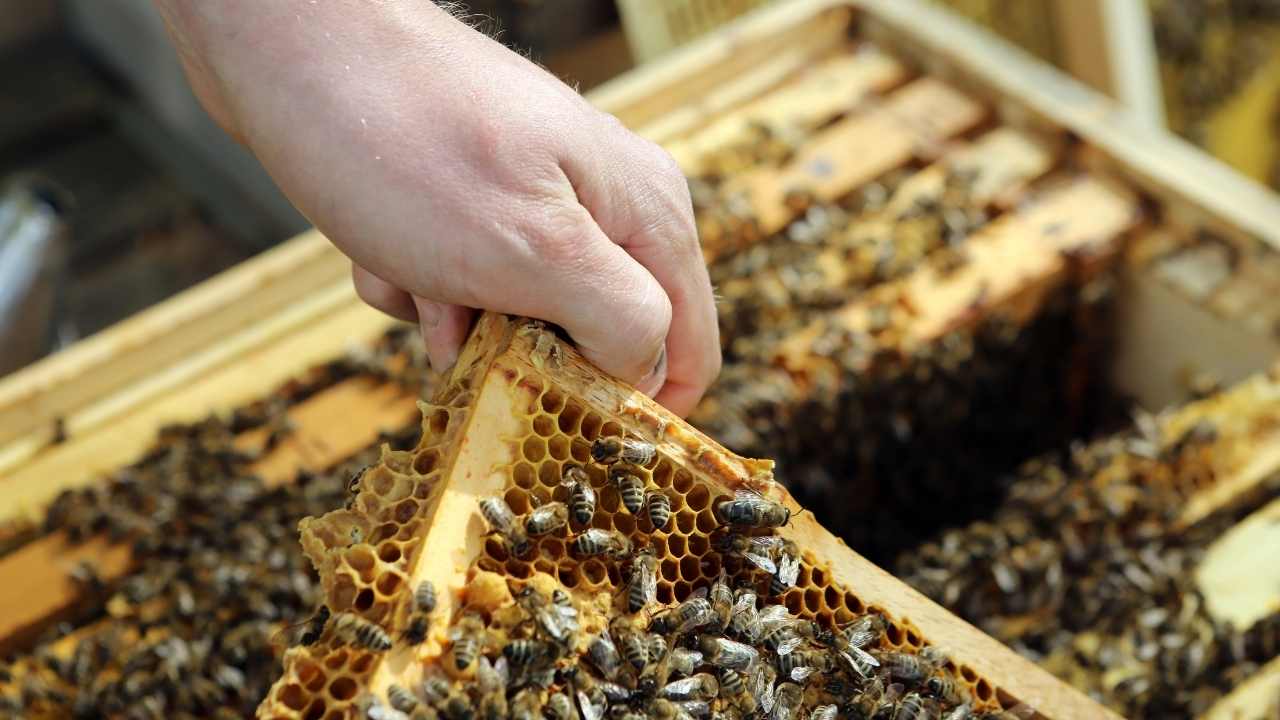
Now that your bees are settled into their new home, let’s talk about feeding them properly.
Feeding Your Bees
Feeding your buzzing new friends is an essential part of beekeeping, ensuring that they have the necessary nutrients to thrive and produce delicious honey. Bee nutrition is crucial for their survival, so it’s important to understand what they need and when they need it. Bees require a balanced diet of carbohydrates, proteins, vitamins, and minerals. Their primary source of carbohydrates comes from nectar and pollen, while their protein needs are met by consuming pollen.
During certain times of the year when food sources may be scarce or unavailable due to weather conditions or other factors, seasonal feeding may be necessary. This can include providing sugar syrup or pollen patties to supplement their natural food sources. It’s important to monitor the amount of food being provided to prevent overfeeding or underfeeding, which can lead to health issues within the hive. Feeding your bees properly not only ensures their well-being but also enhances honey production in the long run.
As you continue caring for your colony, maintaining its health becomes a priority. Check-ups on individual hives should be done regularly as part of routine maintenance procedures. By observing changes in behavior or activity levels amongst your bees, you can detect any warning signs early on before any major problems arise. Proper feeding practices should always be followed as this helps keep them healthy and thriving throughout each season all year round without fail!
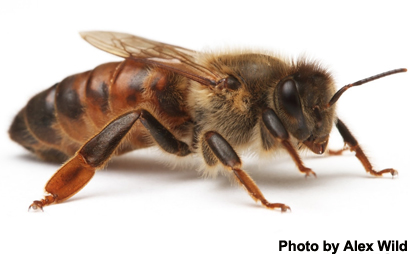
Maintaining Your Bee Colony
Just like tending to a garden, taking care of your bees requires consistent attention and maintenance in order for them to thrive and produce the sweetest rewards. Here are some tips for maintaining your bee colony:
- Conduct routine inspections: It’s important to check on your bees regularly, especially during peak seasons. Inspect the hive for any signs of disease, pests, or parasites that may harm the colony. Look out for queen cells as it may signify that your hive is preparing to swarm.
- Provide adequate space: As your bee population grows, so does their need for more space. Ensure that you have enough frames and boxes to accommodate their needs. Consider adding honey supers during the nectar flow season to give them extra storage space.
- Maintain cleanliness: Keep your hive clean and free from debris. Remove any dead bees or brood as soon as possible as they can attract pests and diseases. Regularly scrape off excess propolis, wax buildup or burr comb.
By following these simple steps, you’ll be able to keep your bee colony healthy and happy while maximizing its productivity potential!
Frequently Asked Questions
How do I protect my bee colony from predators?
Protecting your bee colony from predators is crucial for its survival. Installing fencing around the perimeter of your hive is an effective way to keep out larger predators such as bears or raccoons. You should use a sturdy fence that stands at least six feet tall and bury it at least a foot into the ground to prevent animals from digging underneath it. Additionally, using repellents can help deter smaller predators like rodents or insects. Natural repellents like peppermint oil or garlic can be applied around the exterior of your hive to keep these pests away without harming your bees. By taking these measures, you can ensure that your bee colony is safe and thriving in their new home.
What should I do if my bees become aggressive?
When your bees become aggressive, the first thing to do is to identify the cause of their behavior. For example, if they are being disturbed by outside factors such as loud noises or vibrations, it’s best to remove these stimuli. Hive management and beekeeping techniques can also play a role in reducing aggression. Regular inspections and maintenance of the hive can prevent overcrowding and ensure that bees have enough resources like food and water. Additionally, re-queening may be necessary if a queen’s pheromones are causing unrest among worker bees. Remember that keeping calm during an encounter with aggressive bees is key to avoiding further escalation. Always wear protective gear when handling your hive and seek guidance from experienced beekeepers if needed.

How often should I inspect my hive?
When it comes to beekeeping, one of the most important tasks is inspecting your hive. Inspection techniques vary, but generally involve removing frames and checking for signs of disease or pests. Frequency recommendations also vary depending on the time of year and the health of your colony. During peak season (spring and summer), weekly inspections are recommended to ensure optimal productivity. However, during winter months when bees are less active, inspections can be reduced to once a month. It’s crucial not to neglect inspections as they allow you to catch potential issues early and address them before they become bigger problems. So, make sure you’re inspecting your hive regularly using proper techniques for happy and healthy bees!
Can I keep bees if I have allergies?
If you have allergies, keeping bees may be challenging, but not impossible. Managing allergies requires taking certain precautions and considerations, such as wearing protective clothing and using an appropriate beekeeping mask. Additionally, seeking professional help from an allergist or immunologist can assist in determining the severity of your allergy and if beekeeping is a viable option for you. It’s important to note that even with precautions in place, there is still a risk of allergic reactions. However, by being prepared and cautious, you can safely enjoy the benefits of beekeeping while managing your allergies.
What do I do with the honey my bees produce?
Harvesting Techniques and Culinary Uses are two important aspects of beekeeping that every apiarist should be familiar with. Once your bees have produced enough honey, it’s time to start thinking about the best way to harvest it. Harvesting techniques vary depending on the type of hive you have and the tools available to you. You can use a honey extractor or simply crush the comb to release the honey. Regardless of which method you choose, make sure to extract only matured honey that is ready for consumption. As for culinary uses, there are countless ways to incorporate fresh honey into your meals. Drizzle it over yogurt or oatmeal in the morning, add it to salad dressings, or use it as a natural sweetener in baking recipes. The possibilities are endless! With a little bit of knowledge and creativity, you can turn your backyard beehive into a source of delicious and nutritious food for yourself and others around you.
Conclusion
Congratulations! You have embarked on a journey that will bring you closer to nature and provide plenty of sweet rewards: beekeeping. Just like a honeybee, you have diligently researched the benefits of beekeeping, selected the perfect location for your hive, chosen the right type of hive and equipment, and successfully started your own colony.
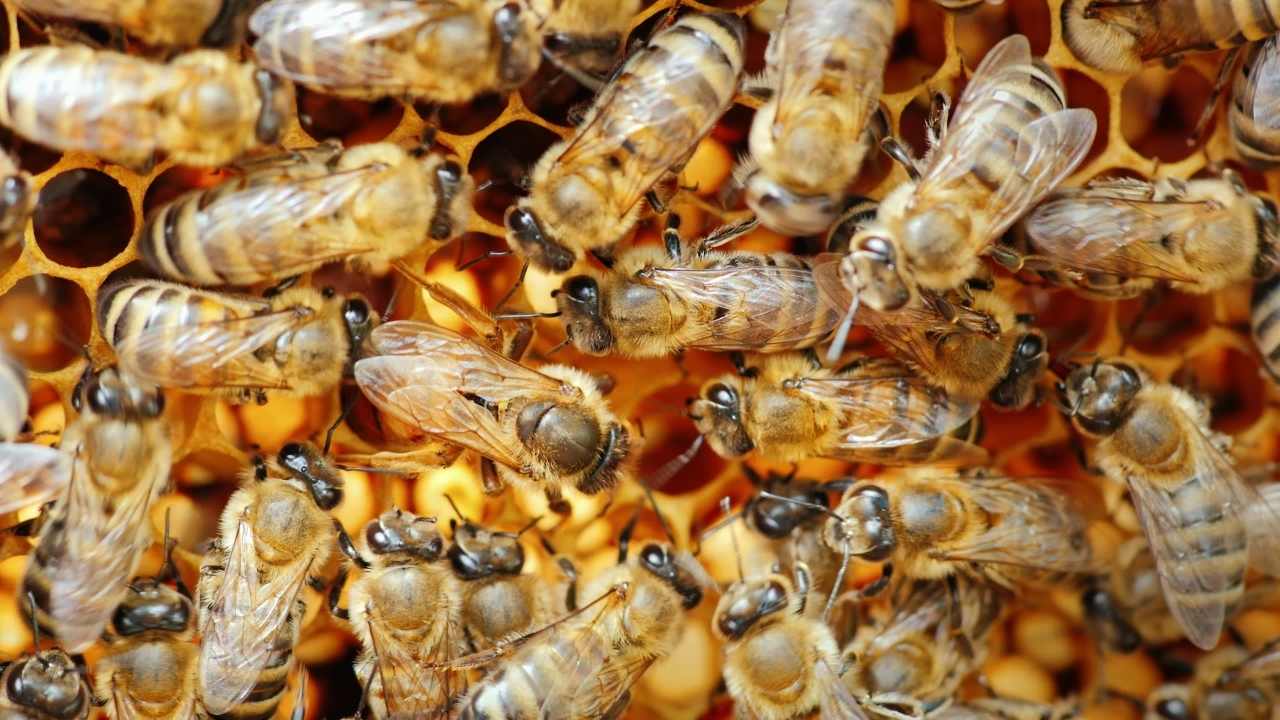
Now it’s time for you to maintain your buzzing beauties. Just like tending to a garden, caring for your bees requires patience, knowledge and dedication. By keeping them healthy and happy, they will reward you with delicious honey that is not only tasty but also full of health benefits.
Remember that every bee colony is unique and requires individual attention. As you continue on this path of exploration and discovery, always be open to learning more about these fascinating creatures. With passion and perseverance, you too can become part of the sweet world of beekeeping. Happy buzzing!

Roger Thomas is a seasoned beekeeper and hive architect with a deep-seated passion for sustainable living. His fascination with bees has shaped his professional career, giving him practical and theoretical expertise in bee behavior, colony health, and optimal hive conditions. Roger’s technical skills shine in his bespoke hive creations that cater to the specific needs of diverse bee species, while his sustainable practices promote environmental balance and the wellbeing of the bee population.
As he continues his journey in beekeeping, Roger has become a dedicated advocate for responsible practices and an insightful educator in his field. His posts aim to inspire new beekeepers, underline the importance of sustainability, and showcase the remarkable contribution bees make to our ecosystem. Roger invites you to join him as he delves into the world of bees and the rewarding, honey-sweet art of beekeeping.


